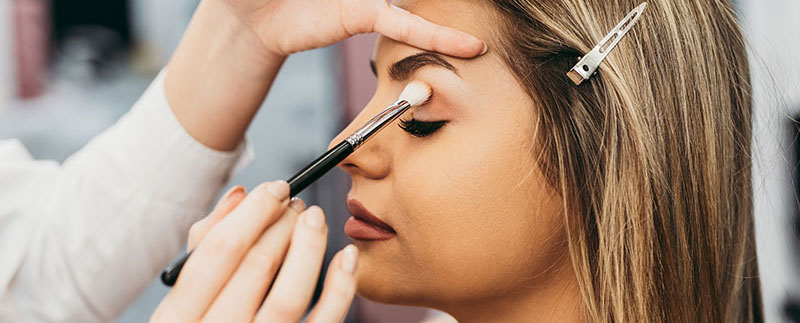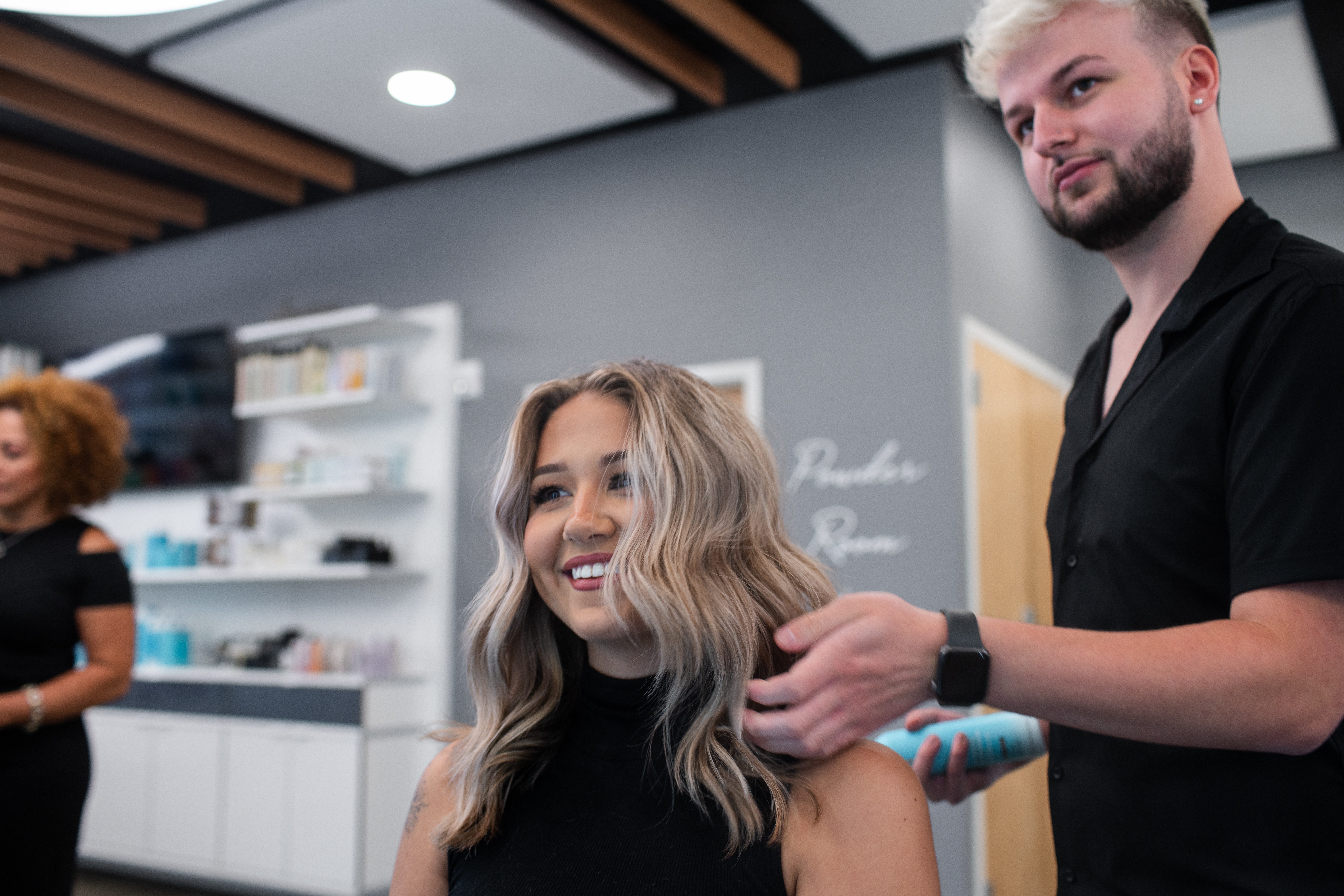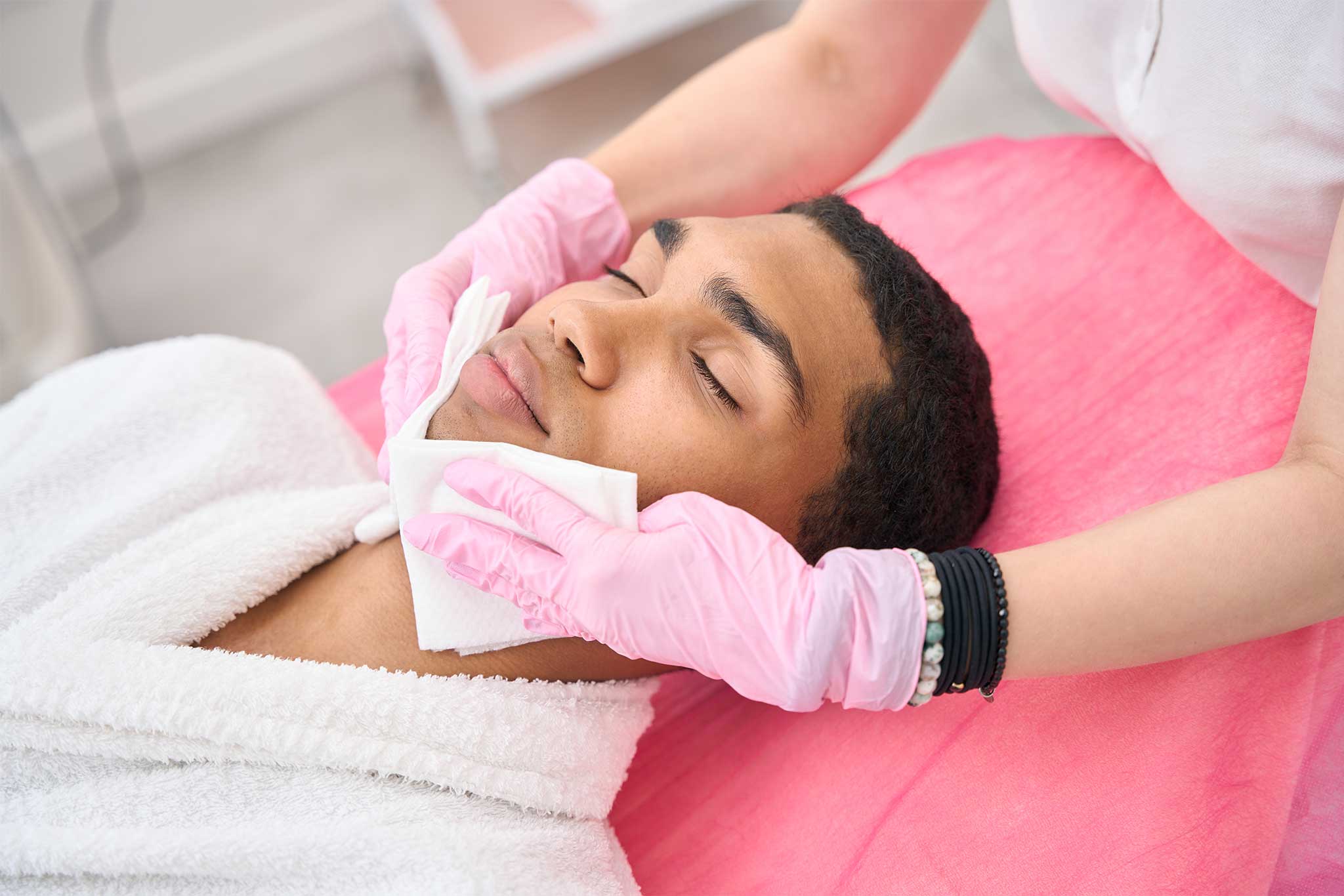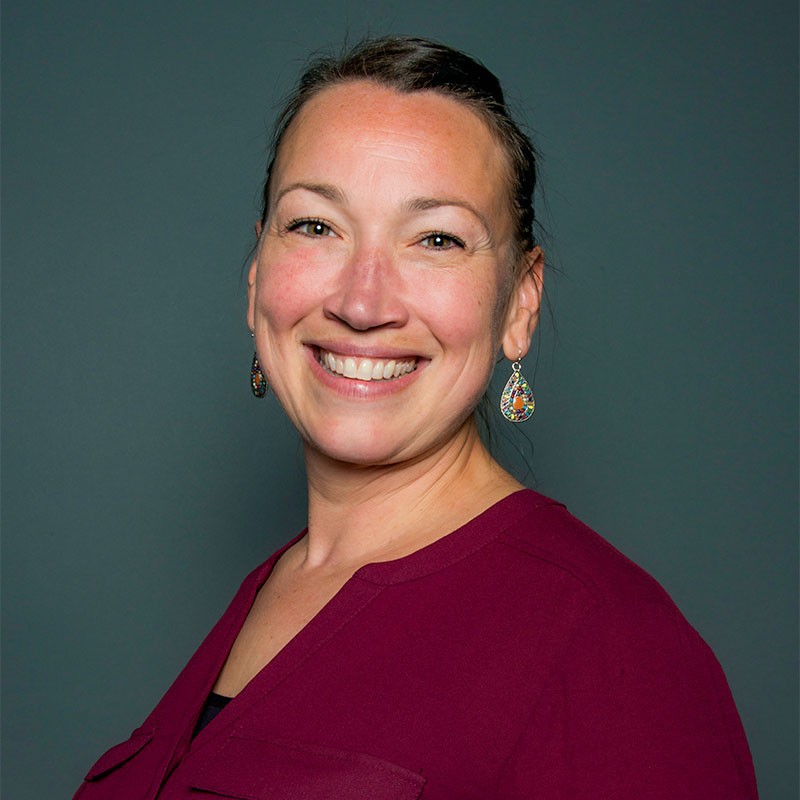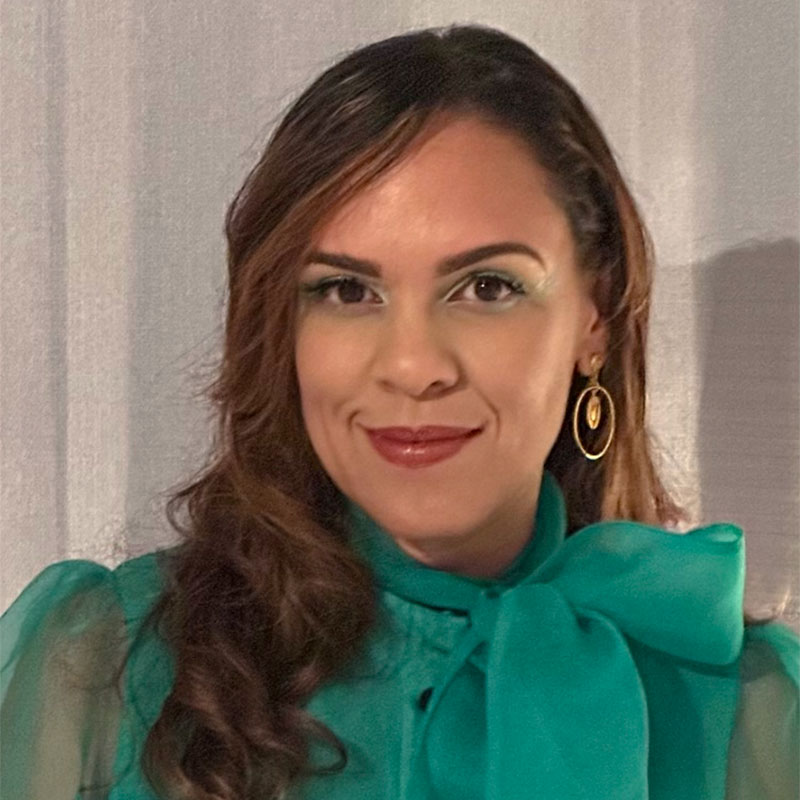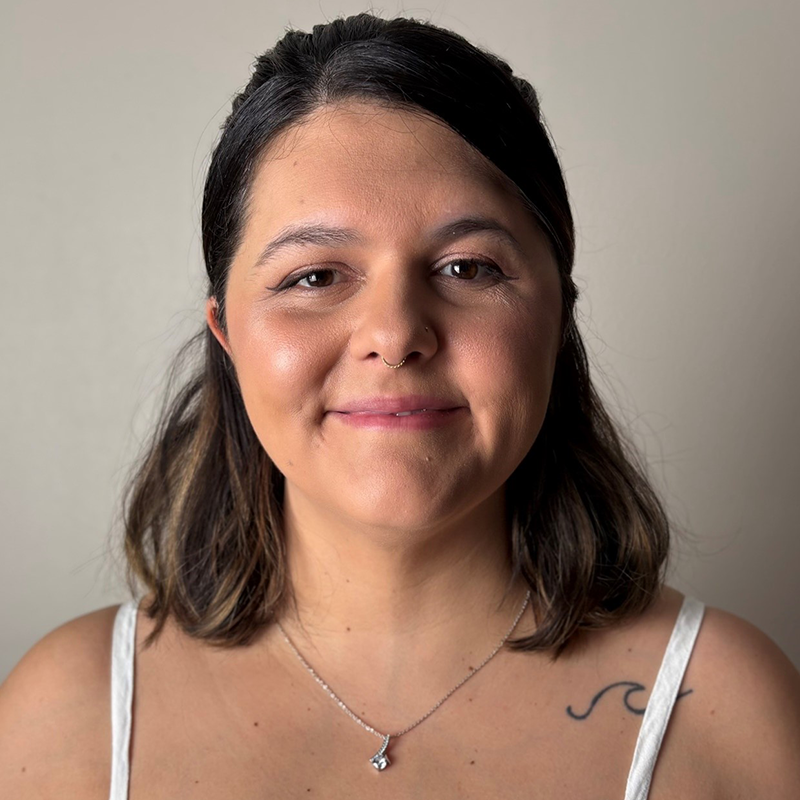All Your Beauty School Questions, Answered
Milady | March 10, 2025 | 10 min read

You’ve got beauty school questions. We’ve got answers. As the leader in beauty school education since 1927, we know a thing or two (or a hundred) about cosmetology school, licensing, and what to expect once you embark on your career.
Below, we give succinct answers to common beauty school questions. But we also provide links to longer articles (whenever appropriate) where you can take a deeper dive if you want.
Let’s get to it.
Table of Contents
- What is cosmetology?
- What’s the difference between cosmetology and barbering?
- What is cosmetology school? What is beauty school?
- How much does beauty school cost?
- Financial Aid, Grants, & Scholarships
- What sort of “degree” can I get from beauty school?
- How long does beauty school take?
- How hard is beauty school?
- What can I do with a cosmetology license?
- What is beauty school like?
- What’s the cosmetology state licensing exam like?
- Do cosmetology licenses expire? How do I renew my cosmetology license?
- Can your cosmetology license transfer from state to state?
- What to do after cosmetology school?
- Cosmetology as a career choice – is it right for you?
What is cosmetology?
Cosmetology is the main umbrella term in the beauty industry. A person licensed in cosmetology would be able to offer hair, nails, and skin care services to clients. Other related licenses include barbering, esthetics, nail technology, and even massage therapy.
What’s the difference between cosmetology and barbering?
Let’s discuss the differences in terms of cosmetology and barbering programs. A cosmetology program is more comprehensive and includes instruction on women’s and men’s hair, nails, and skin. The focus of a barbering program is normally all about hair. Barbering students might learn nails (or they might not). Barbering students also learn straight razor techniques. Some states might have further distinctions between barbering and cosmetology licenses, but nails and straight razors are usually the main differences.
What is cosmetology school? What is beauty school?
Beauty school (also called cosmetology school) is where people go to learn, study, and practice the skills needed to pursue a career and licensure in cosmetology, barbering, nails, esthetics, or massage therapy. You’ll often hear the words “beauty school” and “cosmetology school” used interchangeably. Some might refer to it as barbering school (especially if the school is known for that discipline).
How much does beauty school cost?
The cost of beauty school varies widely, depending on things such as the discipline you’re studying (for example, cosmetology vs. nails); where the school is located; whether the school is accredited; and even how competitive the school is. As a result, beauty schools can cost anywhere from $5000 to upwards of $20,000. Keep in mind that you also need to buy textbooks and supplies, which can boost the overall ticket price.
Can you get financial aid for beauty school? What about grants and scholarships?
Federal financial aid is available for accredited beauty schools. You can also access monies through grants and scholarships. The American Association of Cosmetology Schools (AACS) is a great resource for info on cosmetology school grants and scholarships. (You’ll see our Milady RISE scholarship listed!) Here’s another resource for beauty school grants.
What sort of “degree” can I get from beauty school?
Think in terms of “license” rather than a degree. The goal of beauty school is to learn the skills needed for the license you’re pursuing (in other words, cosmetology, barbering, nails technology, esthetics, or massage therapy).
You will need to sit for your state’s licensing exam (also known as the theory exam or more colloquially as the written exam). Most states also require a practical exam where a proctor gives verbal instructions on services that you must demonstrate/perform. For example, as a hairstylist, you could be evaluated on blow drying, finger styling, hair coloring, roller placement, and more.
How long does beauty school take?
It depends primarily on two things: Which state the school is located in (and presumably where you’d be licensed) and which program you choose (i.e., cosmetology, barbering, esthetics, etc.).
The American Association of Cosmetology Schools provides national averages:
- Cosmetology: 1400 to 1600 hours of instruction
- Nail Technology: 300 hours of instruction
- Esthetics: 650 hours of instruction
- Barbering: tends to be only slightly less than cosmetology, weighing in at 1500 hours of instruction, on average.
When you ask, “How long does it take to go through beauty school,” you’re probably looking for a different answer, like how many months and years, right?
Figure 10 months on the low end and 24 months on the high end, with a whole lot of variables affecting where you might fall. These variables include:
- The program type (full cosmetology vs. a narrower program, like nails)
- The number of hours your state requires
- Part-time vs. full-time program
- And many other variables
How hard is beauty school?
We’re not going to lie: Beauty school is work (but it’s fun work!). The key is showing up. It’s an education model based on instruction hours. So you need to put in the time. But wouldn’t that be true for any educational program you pursue?
Here’s the thing: We’re assuming if you go to cosmetology school, it’s because you LOVE everything it entails. So when you love doing something—and learning about something—it doesn’t feel like work, or even all that hard in the grand scheme of things.
Sure, it will take time to master certain skills. But that’s precisely what beauty school is for. So don’t fret over how hard beauty school is. Instead, put a positive spin on it and check out this article on how to succeed in beauty school.
What can I do with a cosmetology license?
A cosmetology license can be the golden ticket to a variety of careers. Maybe you want to work in a salon as a team member—or maybe you want to rent a booth. Maybe you want to own your own salon (or two or four or more). Maybe you want to go for a second license at some point. Maybe you dream of Hollywood and doing hair and makeup on movie sets. Or on Broadway. Or the runways in Paris and New York during Fashion Week.
Maybe your entrepreneurial spirit inspires you to develop your own products for hair or skin. Maybe you become a major influencer on Instagram. Or a YouTuber with thousands of fans (and a monetized, money-making channel to boot). Maybe you decide to pay it forward by teaching tomorrow’s future cosmetologists.
The key to any decision is educating yourself on the pros and cons and deciding from there. To that end, here are some articles that can help:
• Practical Advice for Landing Your First Gig Out of Beauty School
• Booth Renting Guide 101
• The Guide to Owning a Beauty & Wellness Business
• Today: Artist. Tomorrow: Manager
Bottom line: A cosmetology license gives you the essential foundation for all of the above—and then some. What you decide to do with your license is up to you, but we can honestly say the sky’s the limit.
What is beauty school like?
Beauty school is what YOU make of it. You’ll be learning from textbooks (digital, paper, or both), from instructors, from peers, and from in-person instruction and practice in the student salon. Since cosmetology school is an hours-based education model, showing up regularly is a must. And sure—some days might feel more exciting than others. That’s called life—and it would be true of any program.
When you first start out, you might wonder if you’ll ever master a new technique, but then, with time and practice, you’ll wow yourself with your newfound skills. You’ll gain confidence along the way—in how you communicate with others (soft skills are an essential part of a successful cosmetology career), in how you approach learning, and in how you think about your future.
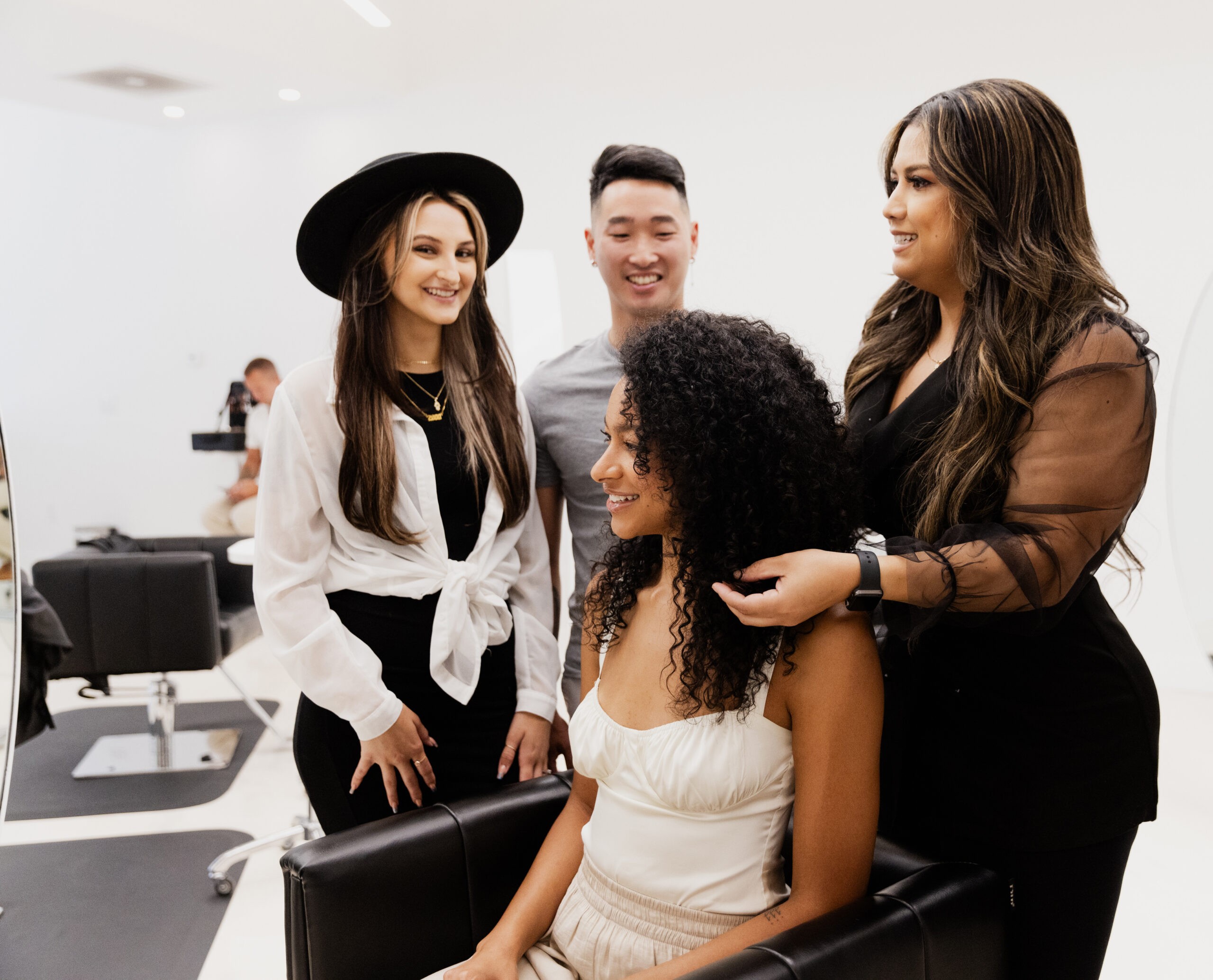
What’s the cosmetology state licensing exam like?
Most states require a written exam and a practical exam. The written exam (also known as the state theory exam) tests your knowledge of your chosen discipline: cosmetology, barbering, esthetics, massage therapy, or nail technology. The practical exam allows you to demonstrate that you’re proficient in specific skills. A proctor provides directives on services you must complete in specific amounts of time.
Read more about the . . .
Do cosmetology licenses expire? How do I renew my cosmetology license?
Yes, you’ll need to renew your cosmetology license. When and how often depends on the state in which you’re licensed. Most states require state-approved continuing education units (CEUs). The goal isn’t to make life more complicated, but to perform a check on your skills and knowledge—and to give opportunities for you to learn new things.
Can your cosmetology license transfer from state to state?
Again, it all depends on the states in question. Some states will allow a straightforward transfer, meaning the license from your home state of licensure will easily transfer to the state you’re moving to (you’ll need to fill out some paperwork and possibly pay a transfer fee).
Some states offer “reciprocity” where you can work in one state under the license of another state. Some states offer “endorsement.” Essentially, your license from another state qualifies you for licensure in the new state without having to re-take the board exams in the new state. Often this happens when states have similar requirements for licensure (like the number of instruction hours).
However, some states (such as Massachusetts) won’t accept reciprocity from other states. Instead, you’ll need to take the state’s practical and written exams. Contact the State Board of Cosmetology in the state you’re moving to in order to understand how things work in that state.
What to do after cosmetology school?
Here’s a tip: Start thinking about what to do after cosmetology school while you’re still in cosmetology school. The reality is your career starts the day you ENTER beauty school, not the day you exit.
For example, right out of school, you might decide to work for someone else so you can focus on building your clientele and giving fabulous consultations and services rather than dealing with all the things involved with renting a booth or running your own salon. But in a few years, you might have a different perspective.
Devote time to the following things:
- Network with faculty, mentors, peers
- Set goals, both short-term and long-term
- Master essential soft skills—like interpersonal communication, finance fundamentals, perfecting client consultations
- Develop a professional online presence that accurately reflects you and your work
- Think about what you want to do right out of school—and talk to people who are doing exactly that
Cosmetology as a career choice – is it right for you?
Do you love working with people? Do you love helping people feel good about themselves? Do you love a fast-paced industry that’s always coming out with new trends? Are you self-motivated and good at networking and promoting yourself? Do you dream of owning your own small business—or perhaps going bigger with several salons around the state? Are you a fan of fashion and style magazines, Instagram feeds, YouTube hair and makeup tutorials? Do you love styling yourself, your family, your friends?
Hear What Professionals Have to Say About the Beauty and Wellness Industry
Only you can decide if cosmetology as a career choice is right for you, but your answers to the questions above will likely provide some insight. In fact, understanding your “why” is an essential first step and something we discuss more fully in this article on how to succeed in beauty school.
Ready to take the first step towards an exciting and rewarding career in the beauty industry?
Sign up for the Milady email list. As a subscriber, you’ll get a sneak peek into the world of beauty and all the possibilities that await you. Don’t miss out on this opportunity to stay in the know and start your journey towards a brighter future today.
"*" indicates required fields

About Milady
Milady is on a mission to prove that a career in the beauty industry can lead to professional success and personal fulfillment. Our job is to create forward-thinking education that reshapes the industry and uplifts the next generation of beauty professionals. Let’s change the face of beauty. Learn more about Milady, here.



